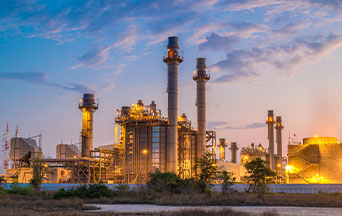
China is engaged in a new war with the West. The arms are not tanks and guns but trade. The tactics call for flooding and dumping cheap, subsidized products upon the West at prices no competitor can match.
The Chinese Communist Party (CCP) plans to prop up the faltering Chinese economy by supercharging its manufacturing sector. The trade war has already caused some casualties.
One victim is the solar panels startup CubicPV, which wagered big on silicon wafers and benefited from President Biden’s climate funds. In late 2022, the company announced plans for a $1.4 billion wafer plant in Texas.
Subsequently, China overexpanded its silicon wafer production, flooding the market with cheap products. Prices crashed by as much as 70 percent. As a result, CubicPV scrapped its plans for a U.S. wafer factory, costing many jobs.
Why America Must Reject Isolationism and Its Dangers
China’s war on trade recently hit Chile. An overabundance of cut-rate Chinese metal flooded the market and led to the collapse of an iron ore miner called CAP. The company recently announced it was shuttering its Huachipato steel mill, which cost a staggering 2,200 jobs. Government-mandated tariffs made little difference. Even with the added costs, the firm could not compete.
The European Union and the U.S. have also slapped tariffs on imports from China. Turkey and Pakistan followed suit by raising duties on specific imports. Other nations are pursuing anti-dumping investigations to defend themselves against the export offensive.
This is a deliberate effort to subvert trade. Beijing policymakers find the Chinese economy at a critical juncture. It is reeling from a crisis of its own making due to a real-estate implosion.
Chinese President Xi’s transformative vision calls for grooming certain manufacturing sectors to dominate the market, like electric vehicles, semiconductors and green energy. He also hopes to continue its dominance in traditional sectors like cheap steel. This can only be done by adding more industrial production to overcapacity.
Xi’s vision of the country is based on two nationalistic ideas. First, he believes China must build a resilient and stable industrial supply chain to support its domestic economy amid heavy sanctions imposed by the U.S. and other Western countries. However, to keep his factories running, the West must continue to buy cheap Chinese products.
The second principle betrays Xi’s deep hatred for Western-style consumption, which he sees as wasteful. Thus, China’s strategic focus shifts to exports as a way to steady a stumbling economy since domestic consumption is limited by policy and low-income levels.
The implications are dramatic: rather than Chinese workers facing joblessness, EV manufacturers, steelworkers, chemical engineers, and solar panel producers in Brazil, Europe and the U.S. will bear the brunt of China’s dumping.
Government subsidies in China have surged so much that companies on the Shenzhen and Shanghai stock exchanges reported $33 billion in subsidies for 2023, a 23 percent spike from 2019. China spends around 4.9 percent of its GDP on developing its industries, outspending the U.S., Germany and Japan. Beijing continues to champion its manufacturing as a global asset even though the only winner in this equation is the CCP.
For example, China’s annual vehicle production capacity has reached 40 million cars, significantly surpassing domestic demand. This year, the country is set to produce 750 gigawatts of solar cells, well beyond its domestic needs. Moreover, China is on course to supply 80 percent of the world’s new basic chemicals this year, even as domestic prices fall, creating a global surplus.
Eternal and Natural Law: The Foundation of Morals and Law
This imbalance is reflected in the trade statistics. The International Monetary Fund (IMF) data indicates that 150 out of 181 countries are experiencing a trade deficit with China. More disturbing is that 43 countries confront a merchandise trade deficit with a GDP of over 5 percent, and over 84 countries have a deficit of over 3 percent of their GDP.
China’s massive overproduction, which accounts for nearly a third of global factory output, sends a clear message: It is time to shutter your manufacturing plants and buy cheap Chinese products. This is not a short-term trend but a long-term threat to global manufacturing.
The West needs to take action. First, it must recognize this is a real war waged by communists against the Christian West. Then, it must defend itself by taking more effective countermeasures before it’s too late.
Photo Credit: © Ha-nu-man – stock.adobe.com

